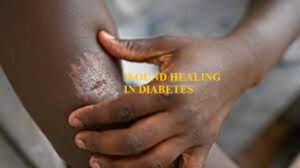- Honey is a very sweet thick liquid that bees make from plant syrup, its majorly contains sugars and the following nutrients, Calories, Carbs Riboflavin, Copper, antioxidants, fiber and some traces of protein.
HONEY AND DIABETES
There are two key constituents of honey: fructose and oligosaccharides. Fructose, the main sugar in honey, has a lower glycemic index than glucose (Think of this as table sugar). This means fructose causes a smaller rise in blood sugar levels compared to glucose. Fructose also delays gastric emptying, suppressing appetite and leading to weight loss. Additionally, fructose enhances the liver’s ability to take up and store glucose, helping to lower blood sugar levels.
Oligosaccharides in honey are indigestible by human enzymes but are broken down by gut bacteria. This promotes the growth of beneficial bacteria like Bifidobacterium and Lactobacillus, which can improve insulin sensitivity and lower blood sugar levels. Oligosaccharides also stimulate the release of hormones like GLP-1 that enhance insulin secretion.
Beyond fructose and oligosaccharides, honey contains various antioxidant compounds like phenolic acids and flavonoids that can help protect against oxidative stress and diabetes-related complications.
Studies show that organic honey (Ile ya Pokot or Turkana—local, not processed!) can help improve glucose tolerance, reduce hyperglycemia, and increase insulin and C-peptide levels in people with diabetes. Honey may also protect the pancreas from damage and stimulate insulin secretion from remaining beta cells.
While more research is still needed, the available evidence suggests that honey can be a useful substitute for sugar for individuals living with diabetes when consumed in moderation as part of an overall healthy eating plan.
2. HONEY AND WOUNDS
Honey serves as a natural antibacterial agent that prevents infections in wounds by creating an unfavorable environment for bacterial growth, due to its low pH, high sugar content, and hydrogen peroxide production when diluted. Honey also reduces swelling, pain, and redness through its anti-inflammatory effects, playing a crucial role in the healing process. Honey is also rich in antioxidants like phenolic acids and flavonoids, which protect cells from damage and assist in tissue repair. It also stimulates the growth of new tissue and blood vessels, speeding up the healing process by enhancing tissue repair and cell proliferation.




